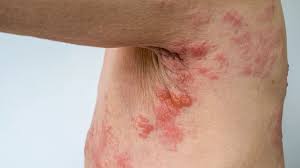Shingles Disease:

A recent large-scale study from South Korea, published in the European Heart Journal, reveals that individuals vaccinated against shingles have a 23% lower risk of cardiovascular events, including heart attacks and strokes.
- Shingles, also known as herpes zoster, is caused by the reactivation of the varicella-zoster virus, the same virus responsible for chickenpox.
- After a person recovers from chickenpox, the virus remains dormant in the nerve cells and can reactivate years later, especially when the immune system is weakened due to age, illness, or immunosuppressive medications.
- Shingles typically presents as a painful rash, often forming a stripe of blisters on one side of the torso, neck, or face. Other symptoms may include itching, tingling, burning, headache, fever, and sensitivity to light or touch.
- The most common complication is postherpetic neuralgia (PHN), a persistent nerve pain that can last for months after the rash clears.
- Shingles is not contagious, but the virus can be spread to someone who has never had chickenpox.
- It is most common in people over 50 years of age or those with weakened immune systems.
- There is a vaccine called Shingrix available, which helps in preventing shingles and its complications.
- Antiviral medications can reduce the severity and duration of shingles, especially if started early.




